Bullying remains a large school bus safety issue today. This is true because buses often have limited or no supervision. Because of this, incidents of physical and mental abuse, emotional control, and even threats occur frequently. For most students, the process to school becomes something they fear more than the haven they're headed to.
Students usually experience significant social stress among their age cohort, most notably in the sphere of friendships. This situation provides the basis for many forms of bullying conduct, such as physical altercations, disrespectful name-calling, as well as emotional exploitation. Statistics from the National Center for Educational Statistics indicate that the bullying victimizes one out of every five students between the ages of 12 and 18 is bullied. As a result, schools are turning more and more to the use of CCTV cameras on school buses as part of the bullying deterrent measures. CCTV cameras do more than provide a deterrent effect; they also allow the school administrator to review conduct and help to make the school environment safer.K
Let’s take a close look at onboard camera systems for buses. By understanding how efficiently these school bus behavior monitoring systems curb bullying and promote overall student protection, decision-makers can see how student safety technology improves daily transportation. With today’s school bus safety technology, schools can establish a safer environment where children are protected throughout their commute.
Understanding Bullying on School Buses
What Counts as Bullying?
Bullying is characterized by repeated aggressive behavior intended to harm another individual, carried out by one or more individuals. It can take various forms:
- Physical Bullying: Bullying through physical damage or threats, like striking or shoving.
- Verbal Bullying: Involves insulting, mocking, or even threatening.
- Emotional Bullying: Involves more subtle manipulations that can damage an individual's self-worth, including gossiping or isolating someone from a group.
Different types of bullying can negatively impact a child’s ability to learn and their mental well-being. Research suggests that victimization not only harms emotional health but can also reduce academic achievement. Thus, a protective environment built with the help of technology to prevent bullying in schools has become Important.
Statistics
The figures regarding bullying in schools are alarming. According to the National Highway Traffic Safety Administration, roughly 67.4% of school bus drivers have observed bullying incidents on their buses. This impacts nearly 12 million children who experience bullying during their daily commute. For this reason, monitoring school bus behavior with real-time surveillance technology in schools is no longer optional it’s a necessary step to protect children from bullying on buses.
For a more proactive approach, schools are also adopting real-time school bus monitoring to track and reduce bullying incidents effectively.
Bullying Prevalence by Setting (2024–2025 survey data)
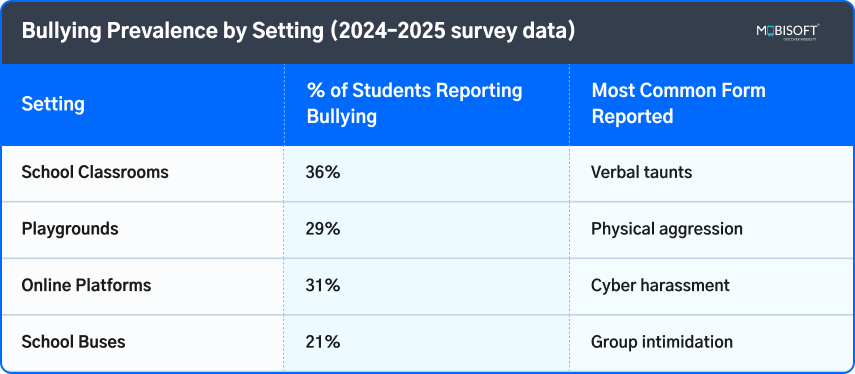
Challenges in Addressing Bullying
Several challenges contribute to the underreporting and difficulty in addressing bullying on school buses:
- Lack of Adult Supervision: A single driver in the bus without any supervisor makes it very easy for bullies to victimize students.
- Fear of Retaliation: Quiet and timid children are the ones mostly bullied. This is because they feel too intimidated to report incidents.
- Group Dynamics: Even if a student doesn’t want to, peers often pressure others to contribute. As for the ones watching, they are afraid to report; otherwise, they might become the next targets.
Impact on Victims
The impact of bullying on mental and emotional health is considerable. Victims frequently encounter:
- Anxiety and Depression: Survivors might experience anxiety disorders or signs of depression, impacting their overall health. Youth who experience bullying face a 50% higher likelihood of having suicidal thoughts.
- Reduced Academic Performance: It often deters the victim from a focused mindset, leading to poorer grades.
- Social Isolation: Individuals might detach from social engagements, resulting in loneliness and increased emotional suffering.
To address these challenges, many districts are implementing educational transportation management software. Such software helps institutes manage transportation as well as students’ safety efficiently.
Emotional and Academic Impact of Bullying

Role of Peer Dynamics
Peer influences play a huge role in the expression of bullying. Many episodes occur with bystanders present, who either enable the bullying by supporting it or by staying silent. This social hierarchy fosters complicity, making it harder for victims to report incidents. By combining anti-bullying policies for schools with smart security cameras for school transportation, administrators can break this culture of silence and build safer environments.
Exploring advanced transportation and logistics solutions can further help schools manage student safety and fleet monitoring effectively.
The Role of Camera Monitoring Systems
Introduction to Camera Systems
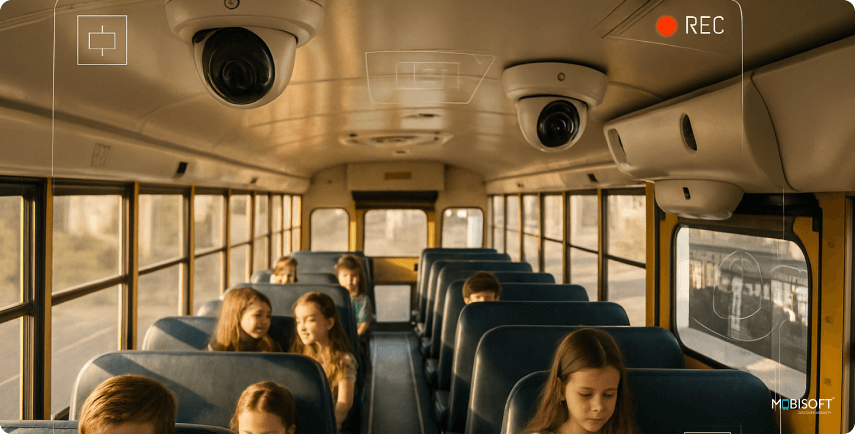
Camera surveillance systems in schools have become increasingly important for protecting students against bullies and dropping them off safely.. Such systems typically involve the installation of school bus security cameras both inside and outside the vehicle to continuously monitor student conduct.
Types of Cameras
- Interior Cameras: Situated conveniently around the bus, these cameras allow for an overall view of interactions among students. Many include 360-degree functions and voice recording to ensure precise documentation of events.
- Exterior Cameras: These monitor the areas around the school bus to safeguard children as they board and exit. They also record traffic violations, such as vehicles illegally passing stopped buses, contributing to broader school bus safety technology.
Real-Time Monitoring
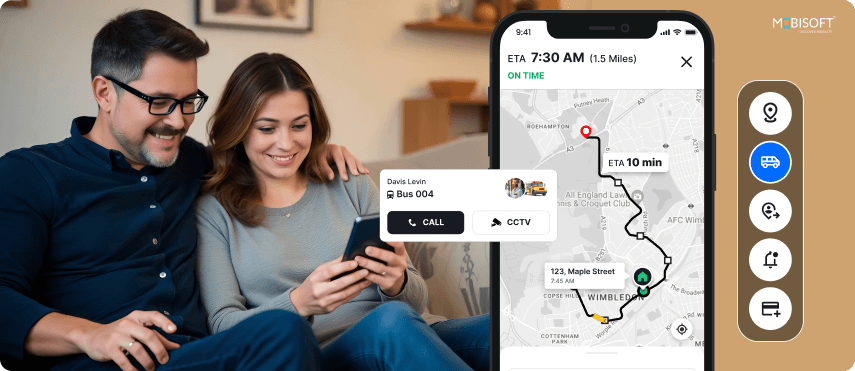
Onboard camera systems for buses offer live feeds for the school officials to know exactly what is happening. This only keeps the driver in check, but also helps react immediately in case of an emergency.
Data Storage and Retrieval
Latest camera installations usually incorporate cloud-based storage systems, making it simple to access and playback footage. It is an important aspect during investigations, as it is then possible for school administrators to watch incidents quickly and easily.
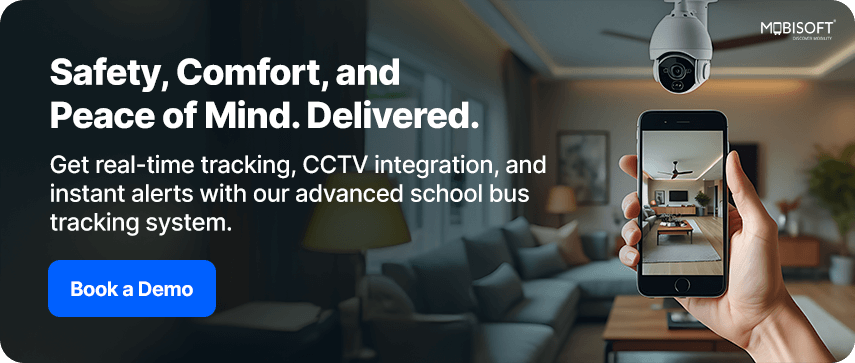
Benefits of Implementing Camera Monitoring Systems
Preventing Bullying
Their presence also serves as an effective way of mitigating bullying. Knowing that people are being recorded has often resulted in a positive change in students' behavior. Schools with operational bus surveillance systems have a dramatic decrease in incidents of bullying. On top of that, schools with school bus security cameras report a decrease in incidents of bullying and an improved standard of behavior among students.
Evidence Collection
Video footage captured by CCTV camera systems in schools constitutes fundamental proof in disputes. In incidents where charges emerge, visual footage can facilitate confirmation of charges made by students and their caregivers, thereby enhancing accountability.
Accountability for Students
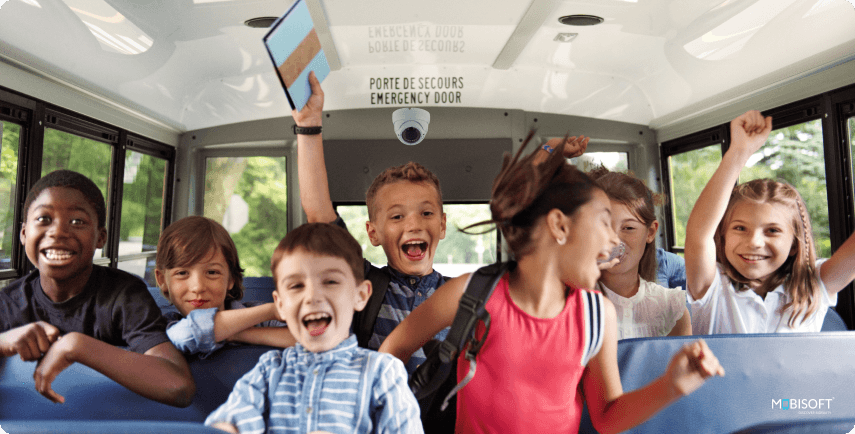
Knowing that they're being monitored also has a positive impact on students' behavior. The use of school transportation safety solutions enables students to be responsible and instills an accountability culture.
Support for School Authorities
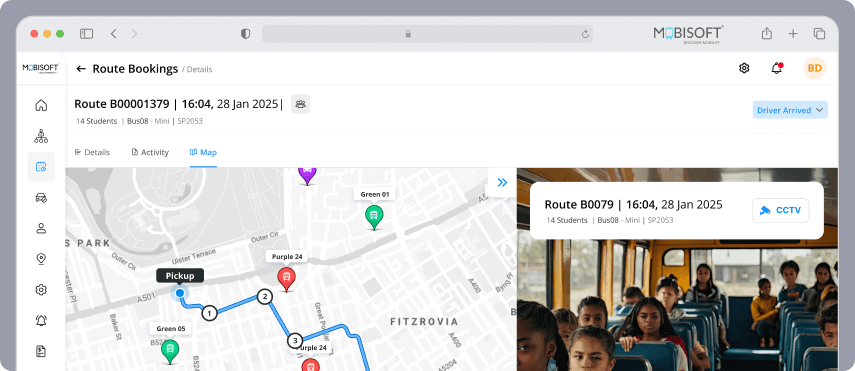
Video recordings can facilitate school authorities in conducting more thorough investigations into incidents. Through presenting a clear description of events, school authorities are better placed to effectively settle disputes and to take effective disciplinary action.
Improved Driver Performance
Drivers are often blamed, being in the bigger vehicle. Camera monitoring helps such drivers with proof of innocence. Thus, it protects not only the students, but helps vulnerable drivers as well.
Learn more about the importance of cameras on school buses in preventing misconduct and creating safer student environments.
Case Studies and Success Stories
School District Implementations
Numerous school districts also established camera surveillance systems in schools with much success. Montgomery County Public Schools in Maryland, for instance, installed an extensive camera system throughout their entire school bus fleet. They noticed a significant reduction in incidents of bullying and better behavior among pupils.
Before and After Comparisons
Many of these powerful before-and-after analyses have come from case studies. In one California school district that implemented school bus camera systems, incidents of bullying dropped by almost 40% in the first year of use. Also, incidents that required disciplinary intervention by the schools dropped markedly, signifying successful prevention of improper activity.
Testimonials from Stakeholders
Parents, pupils, as well as school officials have given positive testimonies about their experience with child safety on school buses through monitoring solutions. As one parent remarked, "Knowing that there are cameras on the bus makes me feel better. I am assured that my child is safe. If something were to happen, then there would be footage to handle it."
Potential Limitations and Concerns
Privacy Issues
Though camera monitoring systems offer considerable advantages, issues with respect to privacy have to be overcome. Students and their parents might be averse to being monitored by cameras, leading to a consideration of surveillance's ethical effects. School districts should adopt definitive data usage policies and accessibility to help ease such concerns.
Technology Overreliance
There is a risk that schools might be too focused on relying on technology to manage behavior and fail to recognize the value that building a positive school culture contributes. Although school bus bullying prevention technology may be a valuable monitoring device to have, it should be an addition to efforts to instill respect and empathy among students, not a replacement.
Costs and Funding
Operating and maintaining bus monitoring systems represent a financial challenge to school districts. Costs associated with purchasing camera systems, installation, and upkeep can be considerable. But counterbalancing funding, such as government grants and cooperation with privately owned companies, can help ease costs.
Future Innovations in Bus Surveillance Technology
Emerging Technologies
With continuing technological improvements come higher levels of functionality with school bus surveillance technology. New developments such as AI analytics and automated incident detection offer future potential for enhanced monitoring capabilities. These systems can detect behavioral patterns among pupils and advise school authorities about potential issues prior to their occurrence.
Integration with Other Technologies
Future school bus surveillance systems can be integrated with additional safety systems such as GPS tracking systems and emergency response systems. In a holistic format, an integrated system can provide a better overall image of student safety en route.
Potential for Real-Time Interventions
AI is learning fast, and it’s not long before it will be able to predict harmful incidents with accuracy. AI models are being trained on databases that help predict stress, inform drivers or administrators of schools in real-time.
When combined with school bus tracking technology, these systems provide a holistic approach to student safety on and off the bus.
Future Safety Tech Integration
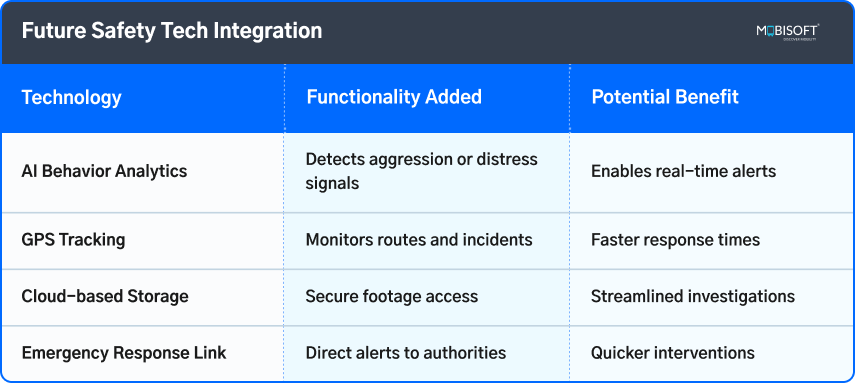
Conclusion
Installing surveillance camera systems on school buses is a step towards curtailing bullying and enhancing students' safety. Since they ensure round-the-clock observation, they prevent negative behaviors, help school authorities to take action against incidents where necessary, and enforce responsibility among kids. Though concerns about breach of privacy and machine dependency are dominant, the benefits accruing to having a secure and caring school environment for kids overwhelmingly surpass their negative impacts.
To establish a culture of respect and a school-safe community, school districts would be remiss if they did not invest proactively in school bus security cameras and bus surveillance systems for schools. Prospects for protecting students en route to school are positive. Innovative additions are creating a future where students feel safe and compassionate. Implementation of supervised school transportation safety solutions on school premises as well as school buses is essential today. It ensures child safety on school buses from the moment students leave home till they get back.
By embracing modern safety measures, districts not only improve security but also maximize long-term value. See how school bus tracking ROI can justify investing in advanced student safety technology.
Key Takeaways:
- Bullying beyond classrooms: It does not happen just in the classroom. Nor does it happen just in the halls of the school or the playing fields. The school buses also see bullying as very few adults are observing them, which allows the negativity to thrive.
- The effects linger for a long time: Bullying does not merely attack the body. Anxiety, depression, PTSD, and persistent learning issues may result from it and impact a child's future opportunities.
- Silence among peers enables abuse: Victims remain silent to prevent backlash or fear exclusion from their peers, while witnesses do not report to avoid becoming targets themselves.
- The impact of CCTV systems: The mere fact of CCTV recordings reduces the incidence of bullying and stimulates a better standard of conduct, which further diminishes participation in trivial and grave incidents.
- Footage increases accountability: Video evidence holds students accountable by upholding student accusations, safeguarding vehicle operators from baseless charges, and providing administration with tangible evidence for case investigations.
- Technology enhances security: Modern infrastructures come equipped with facilities like cloud storage and AI-based alerts, thus creating preventive instead of reactive steps for the security of students.
- A balance is required: Since the benefits of test results are evident, institutions need to cut down concerns about privacy and correlate technology with initiatives that stimulate respect and compassion in the community.
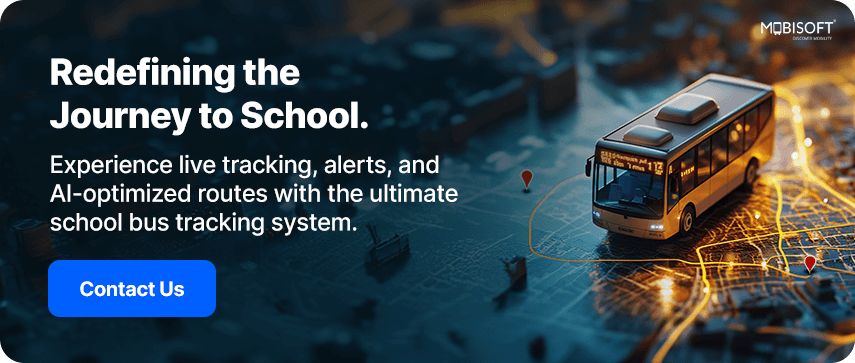

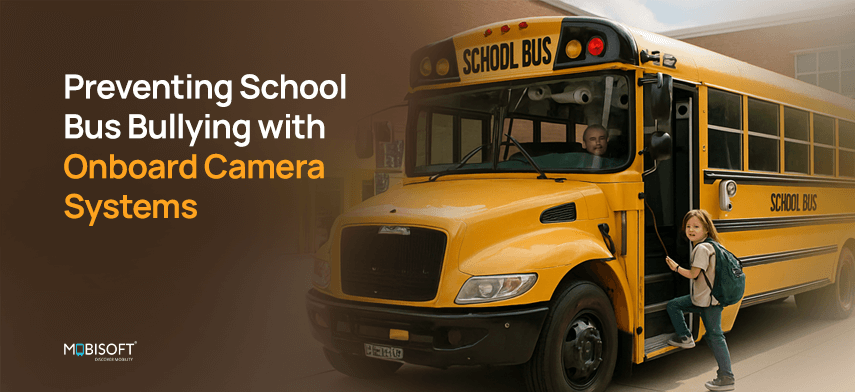


 September 29, 2025
September 29, 2025


